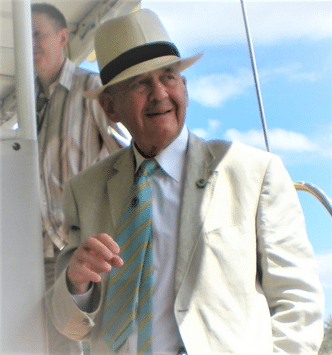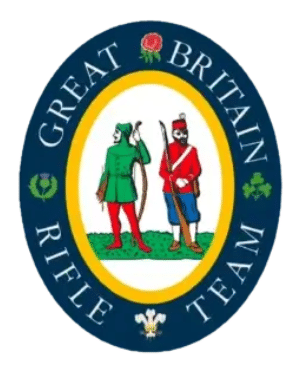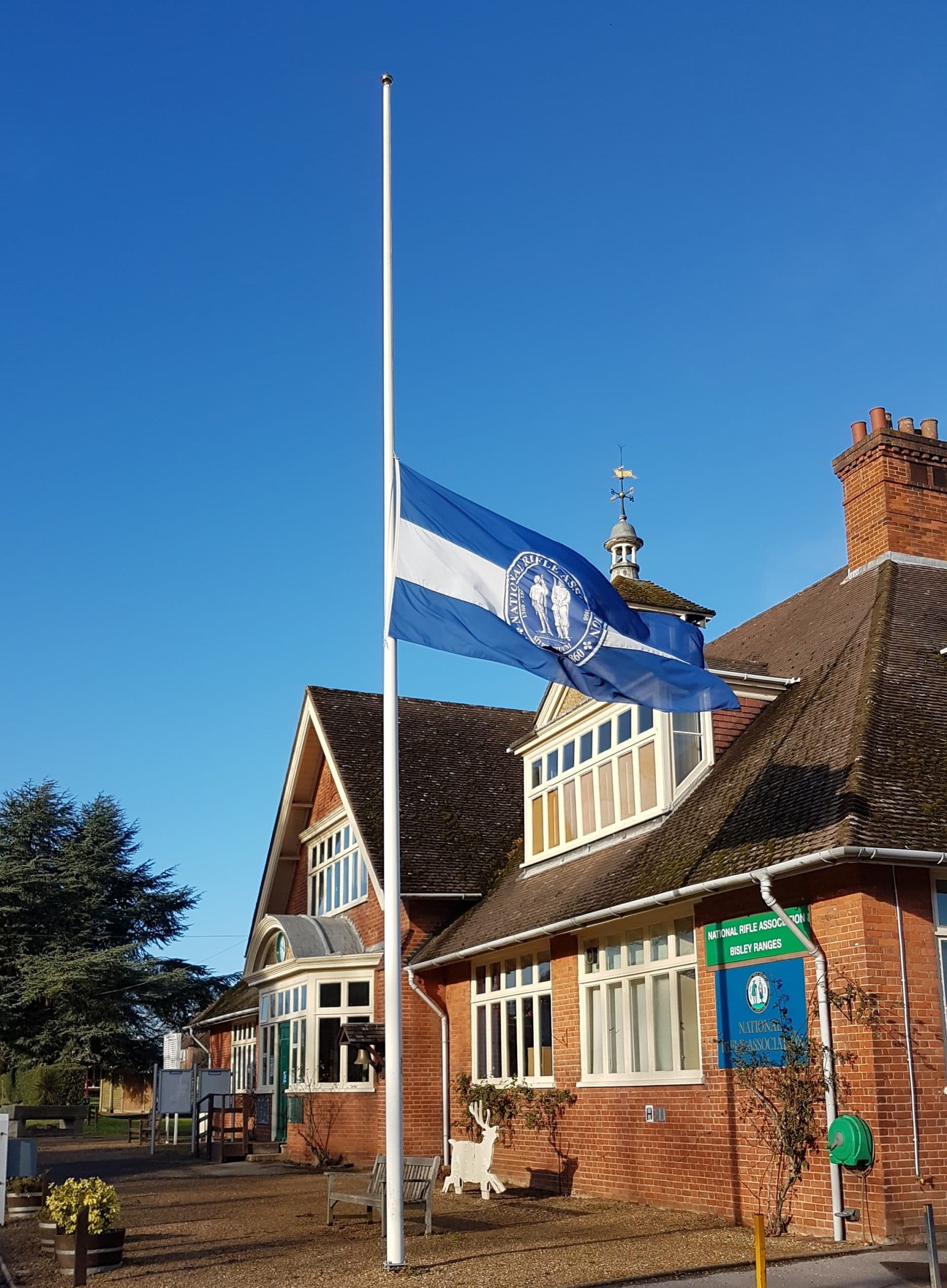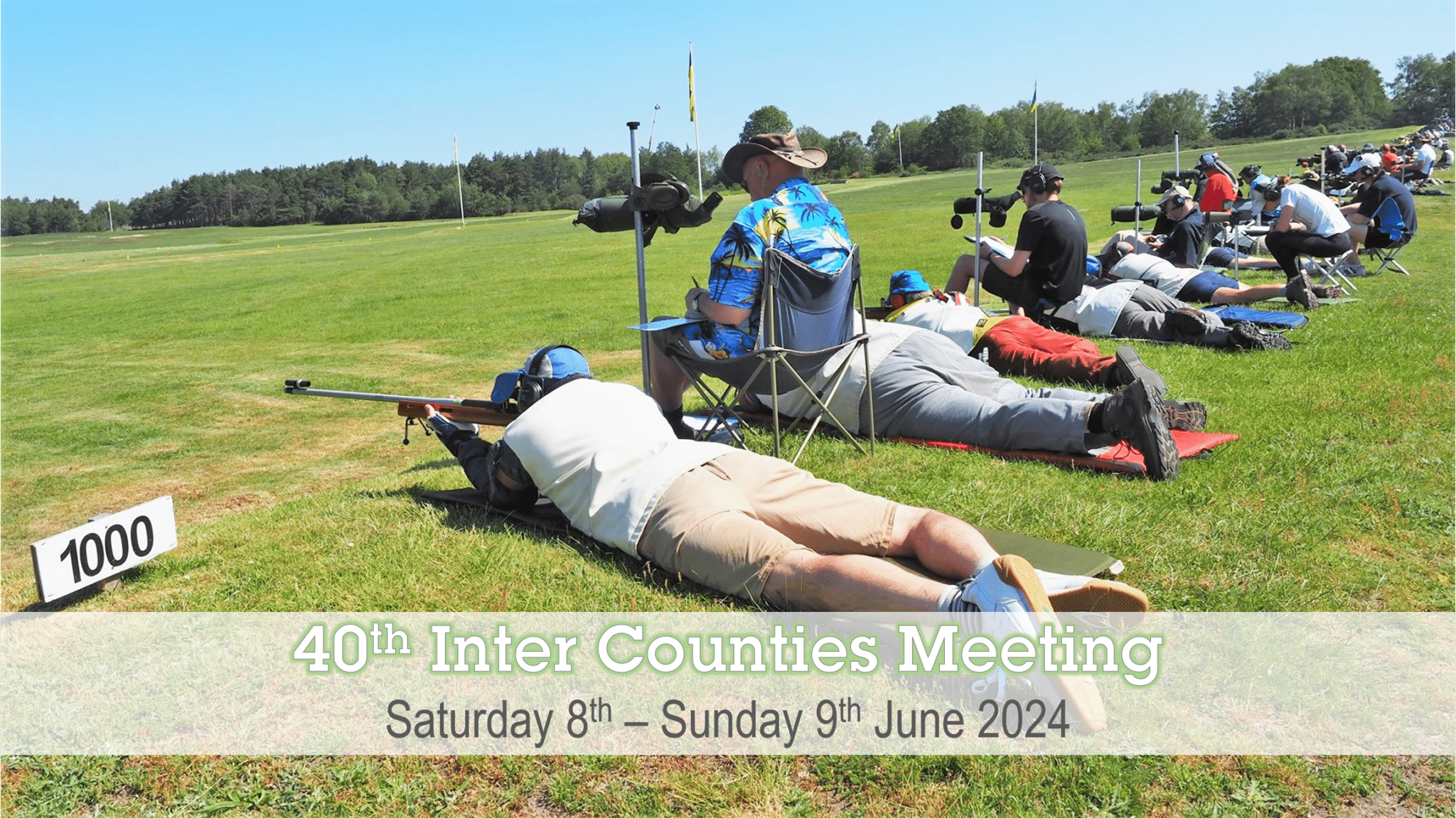Bill Curtis

Bill Curtis 1931-2021
Antique Arms & Militaria Shooter, Collector and Historian
William (Bill) Scott Curtis was born in Putney in June 1931, an only child, the son of Arthur and Elspeth. He was a day boy at a grammar school in Sussex where he was brought up during the war. He witnessed many events from aerial dogfights, to a badly shot up Superfortress exploding on the local airfield after landing, to armadas of Luftwaffe bombers heading north during the Blitz, and armadas of Allied bombers heading south from 1943-45, to Spitfires and Meteors tipping doodlebugs. His collecting instincts started during the war when he acquired numerous war souvenirs including the tail plane of a doodlebug that landed 300 yards away from him while he took shelter with his bicycle in a ditch. Unfortunately his mother threw it all away after the war because he had too much ‘rubbish’, much to his chagrin for the rest of his life.
The family set off to Australia to start a new life after the war, arriving in Melbourne on the Esperance Bay in August 1948. During his time in Australia Bill earnt a living as a textile salesman and was a Sergeant in the Royal Australian Artillery Reserves, where he developed his interest in field guns and small arms. His shooting career really started here where the freedom of Australia enabled him to experiment with muzzle loaders and breech loaders in the bush where no-one lived or much less cared. He had very fond memories of those times.
His father’s ill-health forced the family to return to the UK in the early 1950’s whereupon Bill joined the Royal Artillery, 20 Regiment, 107 Battery on a short service commission as a second lieutenant. He delighted in live firing his troop’s newly issued 25-pounders and formed an experience-based understanding of long range ballistics and coefficients which he would refer to for the rest of his life. While based at Woolwich, Bill started collecting rare muskets and rifles sold out of barrels on the street outside antique dealers in the days when dealers could not give them away because no-one was interested. I think this is where his passion for small arms cataloguing and history began; he was appalled that such fine examples of British military history were unrecorded and unloved. When his Regiment was posted to Hong Kong, he found himself OIC of the Regimental motor pool, which enabled him to acquire (sic) military driving tests for every type of wheeled and tracked land vehicle, which, being British military qualifications were automatically transferrable to his civilian driving licence.
Bill met his wife Mary through a shared passion for horse riding, they were married in July 1960, and both were proud to receive a congratulatory telegram from the Queen on their 60th wedding anniversary last year.
On leaving the Army Bill worked in the motor trade for a short time before finding an interest in insurance. He joined the Eagle Star in 1957, sailed through his ACII exams in 1960 (he was extraordinarily academically gifted; he scored in the 99th percentile of the MENSA IQ test). He worked in London before being posted to Hong Kong (for the second time in his life), whereupon he joined the Hong Kong Marine Police Reserves, which he fondly remembered for the opportunity of target practice with a boat-mounted 50 calibre at a small whitewashed rock on the waterline of one of the offshore islands. In 1966 he moved to Zurich Insurance where he was the assistant manager in the Nottingham branch, then manager of Cardiff and finally Bedford.
His management style both endeared him to some of his staff, and infuriated others and some at Head Office, where changes in corporate governance led to a more “hands on” style which conflicted with Bill’s independent personality. He retired in 1984 to North Wales and never looked back. His life was one of military and firearms history and shooting, it gave him all his friends (bar one or two notable exceptions) and was his life’s work.
Shortly after retiring from his insurance career, Bill turned his attention towards publishing, forming his own publishing house, W.S. Curtis Publishers Ltd. His mission was to reprint rare books that were significant contributions to small arms history and shooting. He reprinted 17 titles in all, which were almost always from his own library in which he wrote and included new forewords.
Bill was an early member of the Muzzle Loaders’ Association, joining in 1956. As a descendant of the old Curtis family business of Curtis and Harvey, the gunpowder manufacturers, it was perhaps inevitable that he would gravitate towards black powder. He held, at one time or another, all the great Offices of the Association. The Curtis and Harvey connection was invaluable when proposals regarding the storage of propellant gunpowders for private use were being discussed with the Explosives Policy Division of the Health and Safety Executive, these discussions resulted in the adoption of the wooden box for storage that has proved to be entirely successful ever since.
He represented his country at home and abroad in numerous international muzzle loading championships. His particular speciality was long range shooting, regularly making respectable scores even by modern standards on current Stickledown targets at up to 1200 yards with Whitworth and Rigby rifles made in the 1860’s. It was his attention to detailed research of loads, bullet making and black powder formulations, together with a thorough understanding of ballistics that enabled the MLAGB to resurrect a lost art. Bill was a very competent shot with modern target rifles too, he won the Army Open and shot for Nottinghamshire numerous times.
Bill was instrumental in the modern revival of international muzzle loading competition. By 1970 discussions were taking place as to the possibility of forming an international body to regularise shooting for the future. In 1971 the Muzzle Loaders Associations International Committee was born, and Bill was the British representative on the founding MLAIC Committee. Although much has changed since those early days, the MLAIC still thrives to this day.
Bill was a muzzle loading representative on the NRA Council during the 1980’s before his right eye developed an un-correctable problem in the centre of his vision which caused havoc with his sight picture. Having tried and failed to shoot successfully left handed, his interest turned more towards his books and it was at this point that he developed a particular interest in the Crimean War. This was a pivotal moment for his collections because it led him to focus almost exclusively on the Crimean period, culminating in him creating his own, not insubstantial, Crimean War museum at his home in Prestatyn. It also opened another chapter in his life when he joined the Crimean War Research Society, becoming Chairman from 2002-04, and later Vice President. He enjoyed many a tour to the Crimea with the CWRS and contributed much to the research and modern understanding of that war.
In 1991 he volunteered to help the NRA catalogue and display the many Wimbledon exhibits in the NRA museum when it was relocated in 1994. Bill worked part time as a volunteer assistant curator until 2018. This work was of particular poignance to him because of his fascination with Whitworth rifles, one of the most accurate rifles of the late nineteenth century, and he catalogued every known example ever made. Wimbledon was opened by Queen Victoria firing a shot from a Whitworth, which is in the NRA museum, together with the Whitworth that won the first ever Sovereign’s Prize, this gave Bill an immense sense of privilege to be associated with their public display.
Growing up with him I would often hear him cheekily say, “If it opens at the breech its weak at the breech, stands to reason!”. Which, whilst a reactionary take on the post muzzle loading era, belies his own understanding and contribution to early breech loading history. He was a member of the Historical Breech Loaders Association and was awarded Honorary Life Membership. Reference to his library helped resolve many issues for HBSA members. He was one of the team of breechloader shooters in the 1990 celebration of 100 years at Bisley earning his “Green Rifleman” uniform. He was widely known and respected the world over on antique arms and militaria forums.
Bill was a prolific collector, not only of muzzle loaders, but bayonets, powder flasks, NRA memorabilia, early cartridges, Victorian gunsmithing tools and literally anything to do with the Crimean War. He had a library on muzzle loading small arms and shooting that is widely regarded to be unrivalled anywhere in the world. He was always keen to use it too, he spent literally decades of his life answering questions and helping others with their own research. The pursuit of knowledge and preservation of the past drove him and I think he inspired many in the same vein too. Bill never saw himself as the owner of anything he collected, merely the caretaker preserving something for future generations; the monetary value was of little significance to him, but its contribution to history was everything.
He survived two heart attacks and a serious stroke in his later years that robbed him of his ability to use his vocabulary effectively, either in verbal or written form. As a historian, an academic and a researcher whose passion was communicating with others about his subject, this was probably the worst that could have happened to him. It frustrated him immensely, but it never diminished his verve to try. Everyone who knew him made allowances and his contribution to research continued, albeit slowly, until he eventually passed away peacefully on 4 January 2021 in Leominster Community Hospital. Although he succumbed to old age he is officially a COVID statistic, quite fitting in a way, he would have wanted to be part of something historical and not to have just faded away.
Bill is survived by his wife Mary, and their only son Reg.




Published on:
Feb 04, 2021
Share